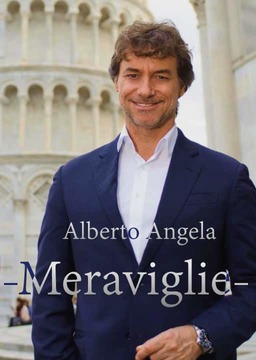









Difficulty:
 Intermediate
Intermediate
Italy
Alberto Angela us takes back in time, to a city that came about in a totally different way: splendid Matera in Basilicata. It's definitely worth a trip.
Difficulty:
 Intermediate
Intermediate
Italy
Matera is all about caves and grottoes. There were many natural caves that were expanded to be used as dwellings and churches, and other man-made grottoes as well.
Difficulty:
 Intermediate
Intermediate
Italy
We enter a fascinating church carved right into the rock: the Church of the Madonna di Idris. There are some surprising discoveries awaiting us.
Difficulty:
 Intermediate
Intermediate
Italy
We see the inside of house built into the rock. It is fascinating to learn how families coped with the problems of water, humidity, and cramped quarters.
Difficulty:
 Intermediate
Intermediate
Italy
Living conditions were so different at the time of the cave dwellings. Imagine having a mule and rabbits running around the house! The government eventually put a stop to this type of dwelling, and much was gained, but much was lost. On the other hand, people had to live somewhere. The Civita, the oldest part of Matera, filled up quickly around the imposing cathedral, and there was no more room for building houses.
Difficulty:
 Intermediate
Intermediate
Italy
In Matera, various epochs shake hands, as Alberto Angela put it. Matera continues to amaze us with what's hidden underneath the piazza of the Baroque quarter: Il Piano.
Difficulty:
 Intermediate
Intermediate
Italy
There is more to tell about the incredible, huge cistern in the center of Matera. With this, the episode concludes, with an invitation to join in the next journey of discovery.
Difficulty:
 Intermediate
Intermediate
Italy
We're in the south of Italy, where many cultures have merged. Alberto Angela takes us to visit the magnificent Valley of the Temples in Agrigento, Sicily.
Difficulty:
 Intermediate
Intermediate
Italy
The temple dedicated to Concordia was built on an ancient seabed from two million years ago, and is one of the most remarkable structures from the Greek world. Alberto Angela explains why it is the only one still standing.
Difficulty:
 Intermediate
Intermediate
Italy
Alberto Angela talks about how Akragas came to be, how its name changed over time, and about what information has been obtained from archeological digs.
Difficulty:
 Intermediate
Intermediate
Italy
Alberto Angela shows us how the Greek Temple of Zeus was built to be seen from great distances.
Difficulty:
 Intermediate
Intermediate
Italy
Although we don't know their function, the Telamons, gigantic statues alternating with the semi-columns of the Temple of Jupiter, were as high as a six-story building. A reconstruction of the temple in the Pietro Griffo Regional Archeological Museum allows us to imagine just how imposing they must have been.
Difficulty:
 Intermediate
Intermediate
Italy
The Ephebe of Agrigento is considered to be one of the masterpieces of Greek sculpture of the fifth century BC in Sicily. It is held in the Regional Archeological Museum of Agrigento, in which we also find a Roman sarcophagus in marble from the second century AD with scenes depicting the life of a child who died at an early age.
Difficulty:
 Intermediate
Intermediate
Italy
We say goodbye to Agrigento's Valley of the Temples and get a close look at the awesome Riace Bronzes in Reggio Calabria. The two life-size Greek bronzes date to the 5th century BC and were discovered off Riace by a scuba diver in 1972.
Difficulty:
 Intermediate
Intermediate
Italy
The first stop is Italy's easternmost point, the Punta Palascìa and its 19th century lighthouse. Alberto Angela then shows us another site in the Apulia region, Castel del Monte, a breathtaking crown-shaped castle built by Frederick II in the early 1200s.
Are you sure you want to delete this comment? You will not be able to recover it.